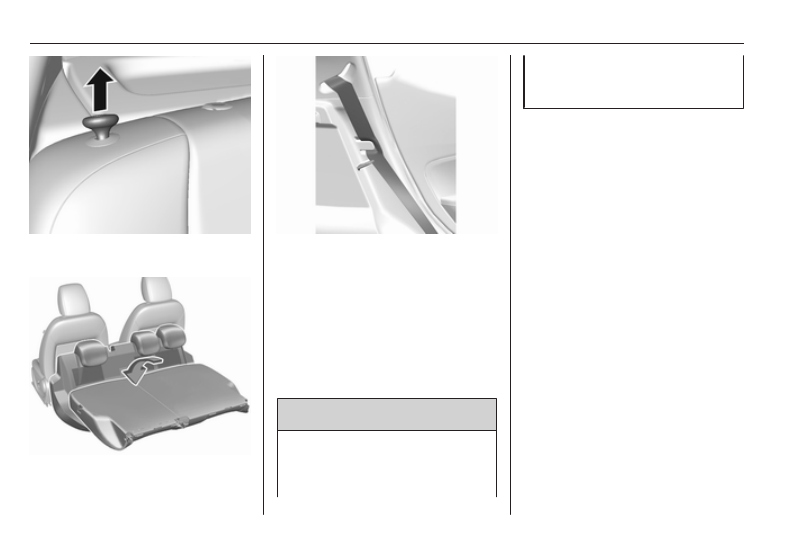Opel Karl (2019 year). Manual - part 4

54
Storage
4. Pull the release knob on top of the
rear backrest.
5. Fold down the backrest and insert
the rear seat head restraints into
the pockets.
6. Put the seat belts for the outboard
seats into the belt guides.
7. Adjust the front seats to the
desired position.
To return the backrest to the original
position:
1. Lift the backrest up and pull out
the seat belt from the belt guides.
Push backrest firmly into place.
9 Warning
When folding up, ensure that
backrests are securely engaged in
position before driving. Failure to
do so may result in personal injury
or damage to the load or vehicle in
the event of hard braking or a
collision.
Ensure the seat belts are not
pinched by the latch.
2. Reinstall the rear head restraints.
3. Place the rear part of the seat
cushion in its original position.
Note
Make sure the seat belts are not
twisted or caught under the seat
cushion.
4. Push the front part of the seat
cushion down firmly until it
latches.
The centre rear seat belt may lock
when you raise the backrest. If this
happens, allow the belt to go back all
the way and repeat operation.
If the seat belt is still locked, fold down
the seat cushion and try again.
To return the rear seat cushion, put
the rear part of the seat cushion in its
original position ensuring that the
seat belt buckle straps are not twisted